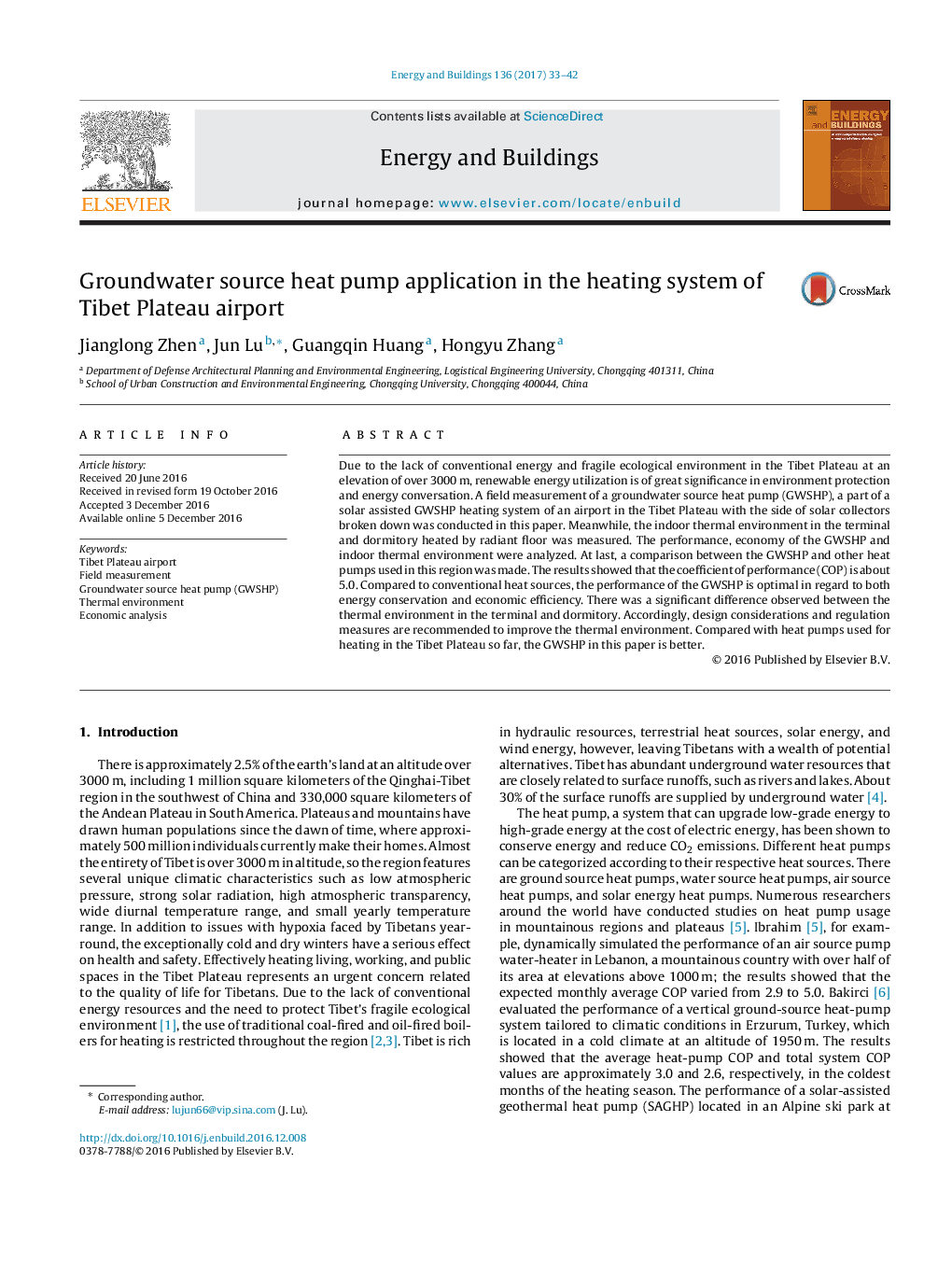| Article ID | Journal | Published Year | Pages | File Type |
|---|---|---|---|---|
| 4914227 | Energy and Buildings | 2017 | 10 Pages |
Abstract
Due to the lack of conventional energy and fragile ecological environment in the Tibet Plateau at an elevation of over 3000Â m, renewable energy utilization is of great significance in environment protection and energy conversation. A field measurement of a groundwater source heat pump (GWSHP), a part of a solar assisted GWSHP heating system of an airport in the Tibet Plateau with the side of solar collectors broken down was conducted in this paper. Meanwhile, the indoor thermal environment in the terminal and dormitory heated by radiant floor was measured. The performance, economy of the GWSHP and indoor thermal environment were analyzed. At last, a comparison between the GWSHP and other heat pumps used in this region was made. The results showed that the coefficient of performance (COP) is about 5.0. Compared to conventional heat sources, the performance of the GWSHP is optimal in regard to both energy conservation and economic efficiency. There was a significant difference observed between the thermal environment in the terminal and dormitory. Accordingly, design considerations and regulation measures are recommended to improve the thermal environment. Compared with heat pumps used for heating in the Tibet Plateau so far, the GWSHP in this paper is better.
Related Topics
Physical Sciences and Engineering
Energy
Renewable Energy, Sustainability and the Environment
Authors
Jianglong Zhen, Jun Lu, Guangqin Huang, Hongyu Zhang,
